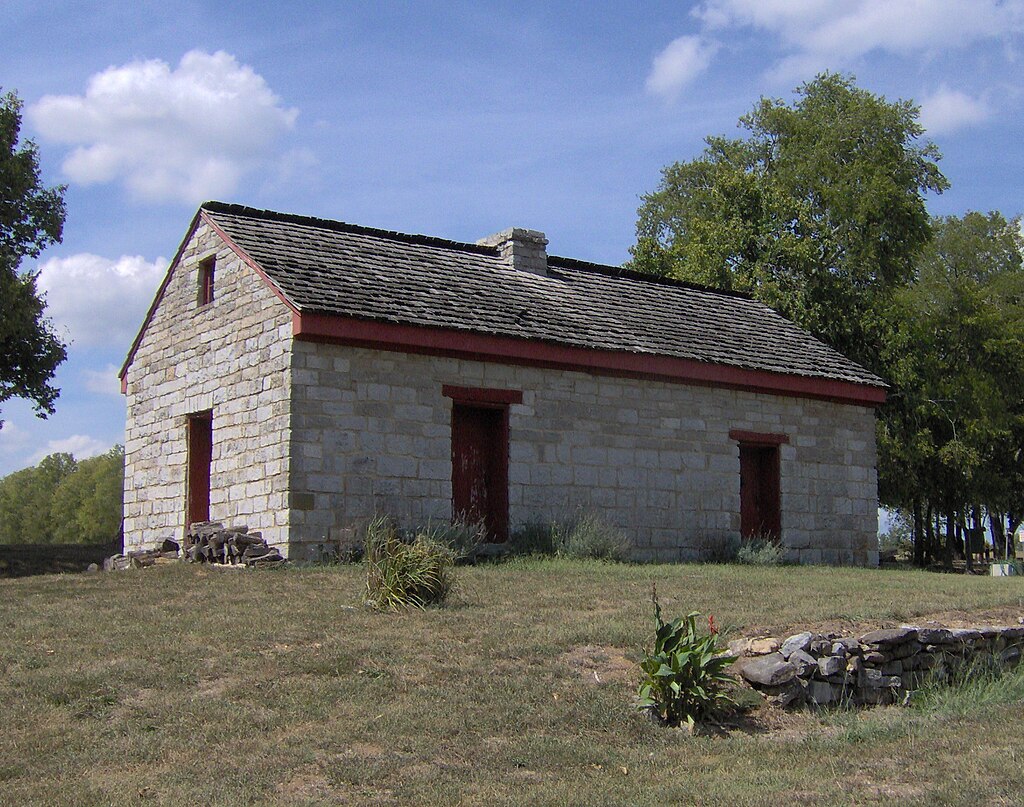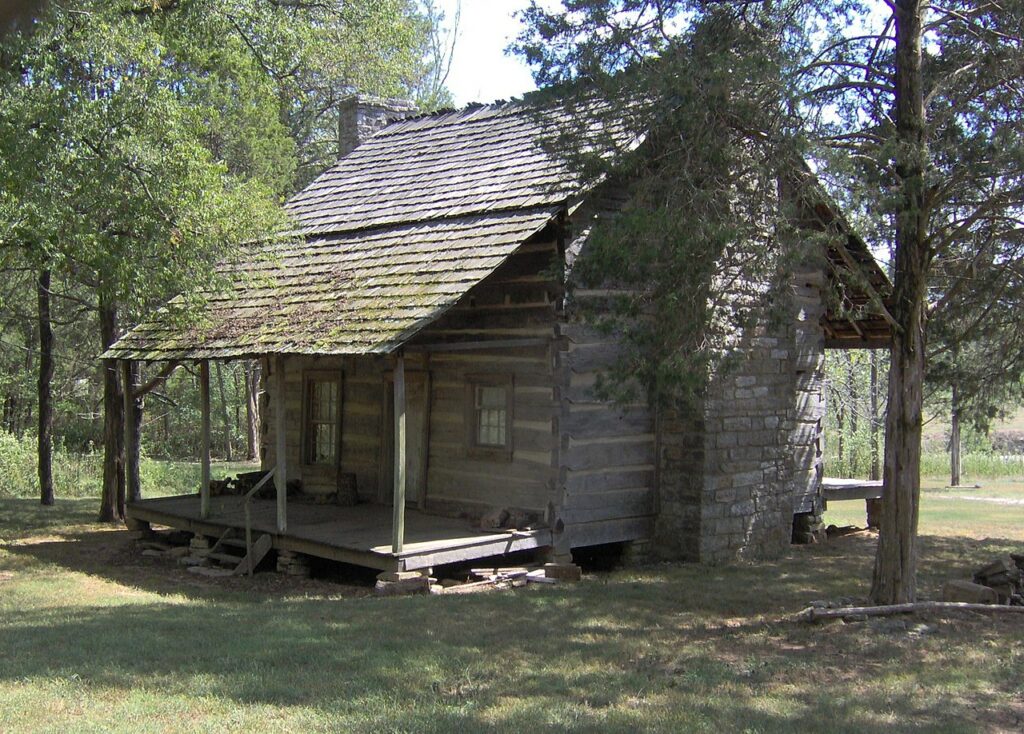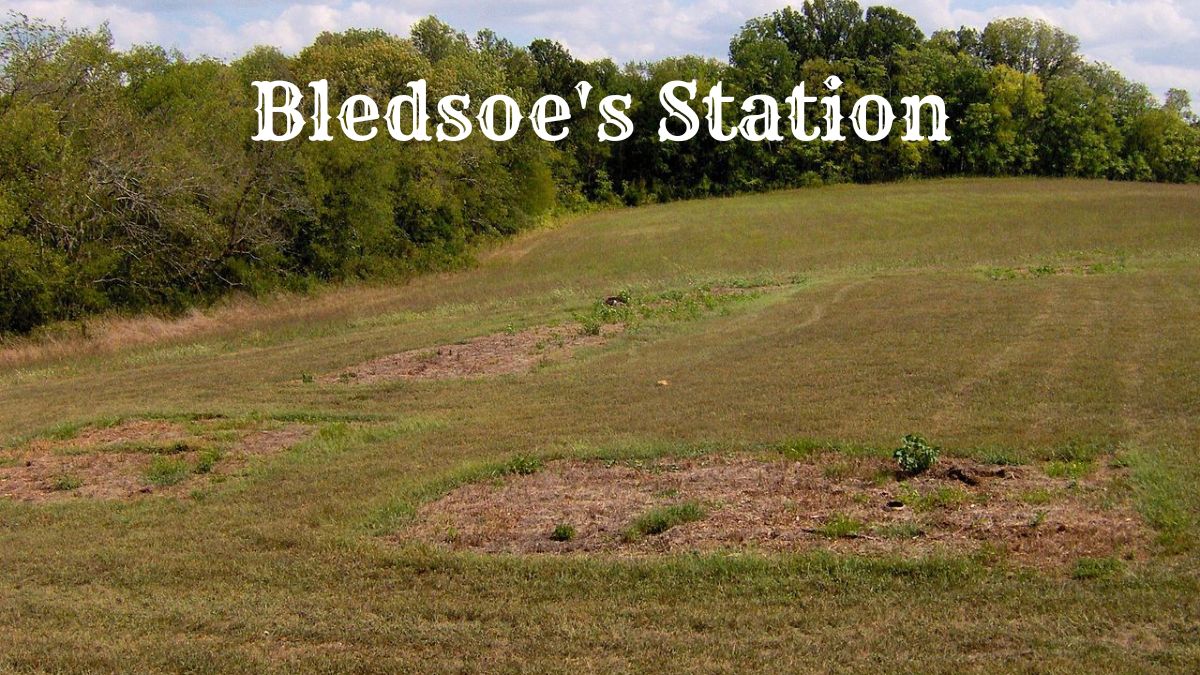Bledsoe’s Station, founded in the early 1780s by Isaac Bledsoe, played a pivotal role in settling the Upper Cumberland region.
As an essential outpost during intense conflict and migration, it provided refuge and security for early settlers.
The station’s strategic location near the Cumberland River facilitated trade and travel, making it a significant hub for Euro-American pioneers.
Today, Bledsoe’s Fort Historical Park preserves this heritage, showcasing reconstructed and original structures, ongoing archaeological work, and historical artifacts that offer a window into the lives of those who shaped the region’s early history.
History of Bledsoe’s Station

Established in the early 1780s, Bledsoe’s Station was crucial in settling the Upper Cumberland region.
This outpost was pivotal during a time marked by conflict and migration, led prominently by Isaac Bledsoe Desha.
The American Revolution Period
During the American Revolution, the Upper Cumberland settlers faced numerous challenges. Hostile Native American attacks were common, as the region’s native inhabitants resisted the influx of settlers.
These settlers, including Isaac Bledsoe, established fortified stations for protection.
Bledsoe’s Station served as a refuge amidst these tensions. The station provided safety and became a focal point for the first major migration of Euro-American settlers to the area.
Isaac Bledsoe and the Settlement
A Sumner County pioneer, Isaac Bledsoe, founded Bledsoe’s Station in the early 1780s. He was joined by his brother Anthony, who played a vital role in the settlement’s development.
Their leadership attracted a flood of settlers, significantly altering the demographic landscape.
Isaac Bledsoe’s efforts in establishing the station ensured a stable foothold for future generations. The station’s strategic location helped settlers withstand the volatile period after the Revolution.
Bledsoe’s Fort Historical Park

Bledsoe’s Fort Historical Park preserves essential relics of early American frontier life, with reconstructed and original structures offering insights into the past.
It is a public park featuring historic cabins, ongoing archaeological work, and spaces for community events.
Historic Structures and Archaeological Work
The park contains several historic structures, including the Hugh Rogan Cottage and remnants of a frontier fort.
Extensive archaeological excavations, frequented by historians and archaeologists from Middle Tennessee State University, have uncovered foundations and artifacts, shedding light on the site’s history.
The outline of the fort is visible, marked by informational signs. Historical records have guided these excavations, providing context for the uncovered items.
Sumner County residents and visitors can observe these findings, gaining insights into the region’s past.
The Nathaniel Parker Cabin Highlight

The Nathaniel Parker Cabin, a well-preserved structure representative of 18th-century frontier architecture, is a focal point of the park. It offers a glimpse into the living conditions of early settlers.
Managed by Bledsoe’s descendants, the cabin has been restored using period-appropriate techniques and materials.
Visitors can see authentic tools and furniture, creating an immersive historical experience. Special tours highlight the cabin’s features and significance in protecting and sustaining families on the frontier.
Preservation and Usage
Bledsoe’s Fort Historical Park is dedicated to preserving these structures and historical artifacts.
Public park status ensures the area is accessible for educational purposes and special events. The pioneer cemetery within the park, where several early settlers are buried, provides a serene location for reflection.
Middle Tennessee State University and local historical societies support the ongoing preservation efforts.
The park has detailed privacy policies to protect the integrity of its archaeological sites while allowing public access to most areas.
Events such as reenactments, educational programs, and guided tours help connect Sumner County residents with their heritage. The park remains a living classroom, illuminating the struggles and triumphs of early American pioneers.
Geography and Culture
Bledsoe’s Station is distinctive due to its unique location and its pivotal role in the region’s history. This area attracts attention for its natural resources and as a hub of early settler and Native American interactions.
Castalian Springs and Bledsoe’s Lick
Bledsoe’s Station is near Castalian Springs, known for its mineral spring, Bledsoe’s Lick. This spring, a significant water source, made the area a popular destination for settlers and Native American tribes.
Its geographical location near the Cumberland River facilitated trade and travel, contributing to its importance in the southeastern United States.
The mineral-rich water also provided essential nutrients for livestock, further anchoring its importance to the local economy and daily life.
Local Impact and the Long Hunter Camp
The area surrounding Bledsoe’s Station was a vital long-hunter camp where explorers and traders would gather. This camp played a crucial role in the exploration and settlement of the region, linking it to broader colonial activities.
The site of Bledsoe’s Station has been marked by its proximity to key historical events and the end of the Cherokee presence in parts of Bledsoe County.
These interactions shaped much of the cultural landscape and contributed to merging different cultural influences across the region.
Explore More: Army Forts in Tennessee
Evolution of Bledsoe’s Station
Bledsoe’s Station underwent significant changes from its origins in the late 1780s to its current state.
These transformations involved moving from a defensive fort to a thriving community and developing numerous economic and service-oriented upgrades.
The transition from Fort to Community
In the late 1780s, Colonel Bledsoe and the local militia initially established Bledsoe’s Station as a defensive fort.
Positioned along Avery’s Trace, a main road in the middle Tennessee area, it was a strategic protection point against potential threats.
By the early 1790s, dozens of settlers began to inhabit the area, transforming the fortified location into a burgeoning community.
The proximity to Bledsoe’s Creek provided convenient access to water resources, encouraging more families to settle.
Over time, what was once merely a defensive outpost became integral to the community network, offering a safe haven for travelers and settlers alike.
Economic Development and New Services
With the growing population, Bledsoe’s Station saw increased economic activity.
The main road, Avery’s Trace, evolved into a vital trade route, attracting merchants and service providers.
The area’s development included establishing various services, such as a full-service gas station and auto repair shops.
These new services catered to the needs of a growing community and travelers.
The gas stations served as convenient stopovers for passersby, offering fuel and essential vehicle repairs.
This transition from a mere settlement to a well-rounded service hub marked a significant evolution of the local economy and infrastructure.
Explore More: 21 Historic Forts of Tennessee
Challenges and Conflicts
Bledsoe’s Station encountered significant trials in its history, marked by persistent Native American aggression and the complex relationship between settlers and Native American inhabitants of the region.
The Struggle Against Native American Aggression
Hostile Native American attacks posed a constant threat to Bledsoe’s Station. The necessity of the fort was underscored by frequent skirmishes involving the Bledsoe brothers.
The settlers faced organized assaults, often intended to reclaim traditional lands and deter further encroachment.
Defensive measures were critical. The fort’s construction provided a strategic advantage, offering refuge and enabling coordinated defense tactics.
Despite these measures, the settlers contended daily with the danger of sudden raids and ambushes by Native warriors.
Conflict and Coexistence
While the fort was crucial for protection, coexistence with the region’s Native American inhabitants was marked by tension.
The settlers’ expansion inevitably led to conflicts over land and resources. These disputes strained relationships and often resulted in violent confrontations.
Mut distrust and competing interests sometimes overshadow efforts to establish peaceful relations.
Although trade and occasional truces occurred, they were fragile and could be easily broken by new settler incursions or retaliatory actions by Native American groups.

Cory is a website owner and content creator who enjoys fishing, history, coin collecting, and sports, among other hobbies. He is a husband and father of four.
Romans 15:4 For whatever was written in former days was written for our instruction, that through endurance and through the encouragement of the Scriptures we might have hope.

